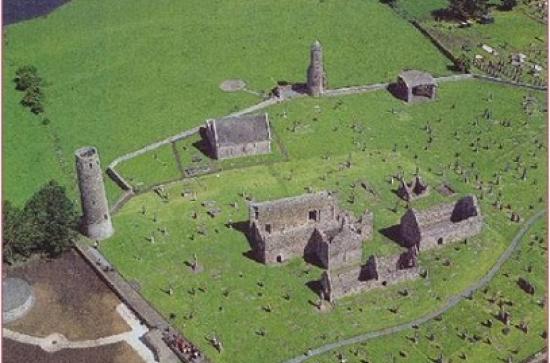
The Centre for Irish Cultural Heritage will hold a field seminar for students at Clonmacnoise and Cruachain on Friday, 14th of March.
The great monastery at Clonmacnoise (Cluain Mhic Nois: ‘meadow of the sons of Nos’) is one of the most complete religious complexes of early medieval Ireland. Although reputedly founded in 548 AD by Ciarán most of the remains (high crosses, round tower, churches, early medieval graves) date to period between 900–1100 AD. Clonmacnoise became one of the most powerful, wealthy and influential monastic centres in Ireland. The monastery is on an important ‘crossroads’: the north-south axis of the River Shannon and the east-west route along a glacial ridge which was an important natural route (‘The Pilgrim Road’) from the prehistoric period.
The prehistoric and medieval complex at Cruachain (Rath Croghan) extends over an area of nine square kilometres; 2,225 acres) and contains archaeological sites (burial monuments, religious sanctuaries and ritual roadways) dating from the Bronze Age to the medieval period (2200 BC–1500 AD). In the early medieval period, as at the Hill of Tara, it became the focus of important literary and mythological association and was identified as the ‘capital’ of the province of Connacht and the residence of the infamous Queen Maeve and her husband Ailill. Cruachain is the starting point for the great medieval story, the Cattle Raid of Cooley (Táin Bó Cúailnge), which features the great hero Cú Chulainn. The famous entry into the Otherworld—Oweynagat: ‘the cave of the cats’—is a modified and accessible natural cave; this is also associated with the Morrígan, the goddess of battle, strife, and sovereignty.
